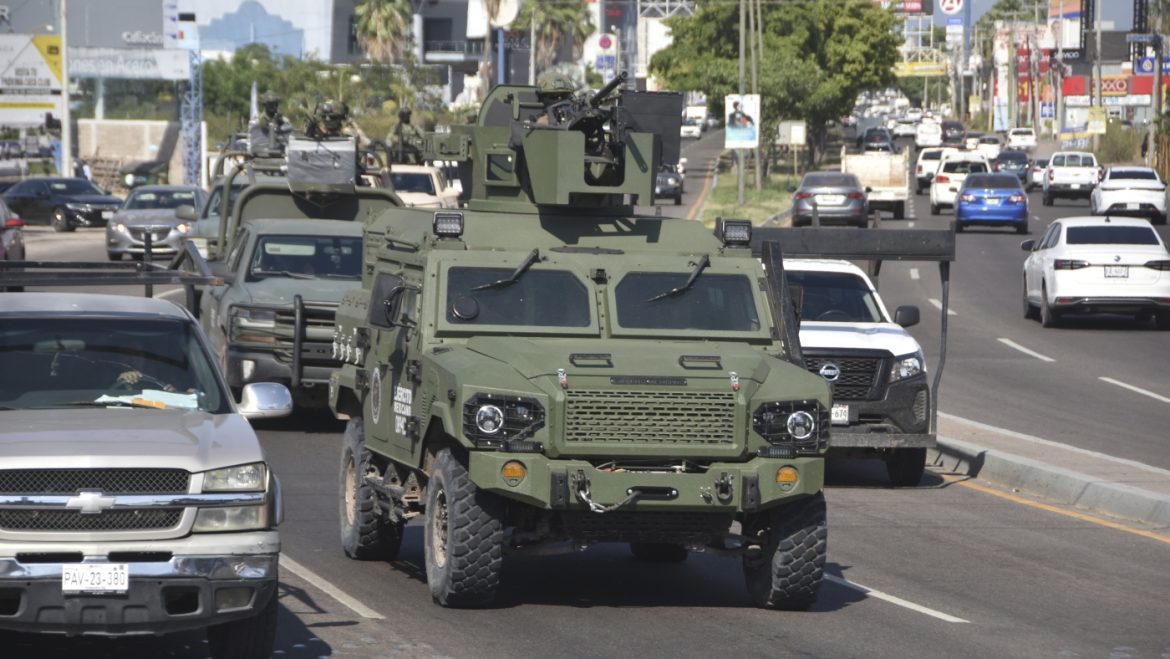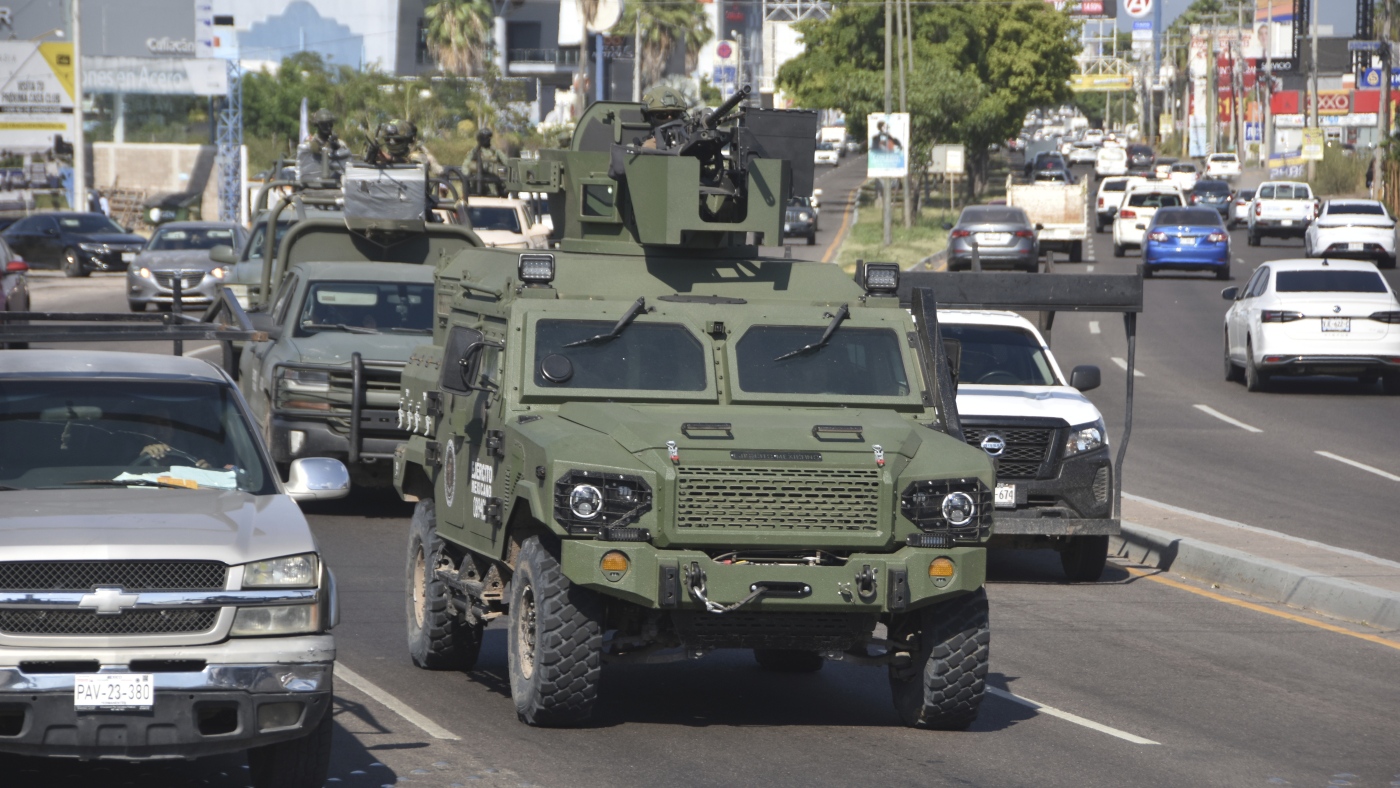The recent surge of violence in Sinaloa, Mexico, has thrust the state into the spotlight as a battleground for control within the fractured Sinaloa Cartel. The brutal killings of approximately 20 individuals in a single day, including the gruesome display of four decapitated bodies hanging from a bridge in Culiacán, underscore the intensity of the ongoing cartel conflict. This escalation is not an isolated incident but a symptom of deeper issues plaguing Mexico’s drug trafficking landscape. Understanding the context, dynamics, and implications of this violence is crucial for comprehending the broader struggle and its impact on communities and governance.
The Sinaloa Cartel: A History of Power and Turmoil
The Sinaloa Cartel, once led by the infamous Joaquín “El Chapo” Guzmán, has long been one of the most powerful and expansive criminal organizations globally. Its influence extends across international drug trafficking routes, particularly those funneling narcotics like fentanyl and methamphetamines into the United States. However, since El Chapo’s arrest and extradition, the cartel has faced significant internal strife. The power vacuum left by his absence has sparked violent clashes among factions vying for dominance over lucrative territories and trafficking corridors.
This internal power struggle has turned cities like Culiacán into hotspots for conflict. The recent surge in violence is a direct result of this fractured leadership, with rival factions employing brutal tactics to intimidate and eliminate opponents. Public displays of violence, such as hanging decapitated bodies, serve as both warnings to rival groups and grim reminders of the cartel’s control and ruthlessness. The cartel’s ability to operate with impunity highlights the challenges faced by local authorities in containing such clashes.
The Immediate Incident: A Day of Bloodshed in Culiacán
The latest sequence of events in Culiacán saw a torrent of violence unfold over the course of a single day. Gunfights, killings, and public displays of brutality left a trail of destruction and fear. The discovery of four decapitated bodies hanging from a bridge sent shockwaves through the community, underscoring the escalating conflict. Authorities reported a total of 20 deaths linked to this surge, a staggering figure that highlights the intensity of the violence.
Such killings disrupt the social fabric of the community, paralyzing daily life and undermining the sense of security among residents. The public display of violence is not only a tactic to instill terror but also a means for factions to assert dominance amidst the cartel’s internal war. The city of Culiacán, once relatively stable compared to other Mexican cities, is increasingly seen as a danger zone, alarming both citizens and policymakers.
Root Causes: Beyond Rivalry
The surge in violence in Sinaloa is rooted in more than just a turf war. Several factors contribute to the escalation of conflict:
– Leadership Vacuum: The arrest and imprisonment of key cartel bosses have left a leadership void, prompting factional disputes to fill the gap. Without a clear hierarchy, factions engage in violent power struggles to establish dominance.
– Economic Incentives: Control over drug routes means control over vast profits. With increasing demand for narcotics, every corridor is fiercely contested. The economic stakes are high, driving factions to employ brutal tactics to secure their territory.
– Weak State Response: Law enforcement efforts are frequently compromised by corruption, inadequate resources, and the overwhelming power wielded by cartels. The state’s inability to effectively counter cartel violence allows the conflict to escalate unchecked.
– Social Impacts: Communities bear the brunt of the violence, with fear restricting mobility, economic activity, and basic freedoms. The social fabric is torn apart, creating an environment where cartel influence thrives.
These dimensions compound the violence, producing cycles that are difficult to break. The interplay of economic, social, and political factors creates a volatile environment where cartel violence can flourish.
Consequences for Sinaloa and Beyond
The spike in violent incidents in Sinaloa carries several significant consequences:
– Humanitarian Crisis: The loss of life, trauma, and displacement affect families and communities directly, exacerbating social instability. The fear and insecurity experienced by residents undermine their quality of life and sense of safety.
– Economic Disruption: Fear and insecurity hinder businesses, deter investment, and challenge local governance. The economic impact of the violence extends beyond immediate losses, affecting long-term development and prosperity.
– Security Dilemma: Police and military deployments often heighten tensions without addressing root causes. Sometimes, these efforts lead to collateral damage or abuses, further eroding public trust in law enforcement.
– Spillover Effects: Violence can spread to neighboring regions, aggravating national security challenges. The instability in Sinaloa has the potential to impact other parts of Mexico, creating a broader security dilemma.
The city of Culiacán, once a relatively stable hub, is now increasingly seen as a danger zone. This shift in perception has alarming implications for both citizens and policymakers, highlighting the urgent need for effective intervention.
Challenges in Addressing the Violence
Efforts to curb cartel violence in Sinaloa face multifaceted obstacles:
– Entrenched Criminal Networks: The cartel’s deep roots in local economies and politics make eradication or reform exceedingly difficult. The interconnected nature of these networks allows cartels to operate with relative impunity.
– Corruption and Impunity: Law enforcement agencies are often infiltrated or compromised, undermining the rule of law. The lack of accountability within these agencies further exacerbates the problem.
– Social Vulnerabilities: Poverty, lack of opportunities, and weak social infrastructure foster environments where cartels can easily recruit. The absence of viable alternatives leaves many individuals vulnerable to cartel influence.
– International Drug Demand: The persistent market for narcotics outside Mexico fuels cartel revenues and incentives for violent disputes. Addressing this demand is crucial for reducing the power and influence of cartels.
Without a comprehensive approach that addresses these intertwined factors, violence is likely to persist or worsen. The challenges are complex and require a multifaceted strategy to effectively counter the cartel’s influence.
Pathways Forward: Rethinking Strategy
Addressing the surge in violence requires a shift from reactive security measures to a multi-dimensional strategy:
– Enhanced Law Enforcement Integrity and Capacity: Reforming police, judiciary, and military forces to operate with professionalism and accountability is essential. Building trust between law enforcement and communities is crucial for effective policing.
– Community Engagement: Empowering local populations through social programs that provide alternatives to cartel influence can help break the cycle of violence. Community-led initiatives can foster resilience and reduce cartel recruitment.
– Economic Development: Creating legitimate economic opportunities can reduce dependence on illicit economies. Investing in education, job creation, and infrastructure can provide viable alternatives to cartel involvement.
– Regional and International Cooperation: Coordinated actions with neighboring countries to disrupt trafficking networks and reduce drug demand are vital. International collaboration can help address the root causes of the violence.
– Intelligence-Driven Operations: Targeted actions focusing on dismantling leadership hierarchies and cutting cartel financing streams can weaken the organization’s structure. Effective intelligence gathering is key to disrupting cartel operations.
Without these comprehensive efforts, the bloody saga in Sinaloa may continue to unfold with tragic consequences. The path forward requires a holistic approach that prioritizes justice, development, and community resilience.
Conclusion: The Heavy Cost of Cartel Fragmentation
The recent surge of cartel violence in Sinaloa, marked by the brutal killings of 20 individuals and the chilling spectacle of decapitated bodies displayed publicly, lays bare the vicious internal conflict tearing apart one of Mexico’s most notorious criminal organizations. This bloody struggle for control not only devastates communities but also challenges the fabric of law, governance, and security in the region.
Confronting this crisis demands more than forceful repression; it necessitates a nuanced understanding of the political, social, and economic dynamics that sustain cartel power. Only through a well-rounded approach that prioritizes justice, development, and community resilience can Sinaloa hope to stem the tide of violence and restore a sense of peace and normalcy to its people. The cost of failure is measured not just in bodies but in lost hope and fractured futures. The path forward is challenging, but with concerted effort and strategic intervention, there is hope for a brighter future for Sinaloa and its residents.


